Source: New York Times, written by Justin Gillis
Scientists’ warnings that the rise of the sea would eventually imperil the United States’ coastline are no longer theoretical.
NORFOLK, Va. — Huge vertical rulers are sprouting beside low spots in the streets here, so people can judge if the tidal floods that increasingly inundate their roads are too deep to drive through.
Five hundred miles down the Atlantic Coast, the only road to Tybee Island, Ga., is disappearing beneath the sea several times a year, cutting the town off from the mainland.
And another 500 miles on, in Fort Lauderdale, Fla., increased tidal flooding is forcing the city to spend millions fixing battered roads and drains — and, at times, to send out giant vacuum trucks to suck saltwater off the streets.
For decades, as the global warming created by human emissions caused land ice to melt and ocean water to expand, scientists warned that the accelerating rise of the sea would eventually imperil the United States’ coastline.
Now, those warnings are no longer theoretical: The inundation of the coast has begun. The sea has crept up to the point that a high tide and a brisk wind are all it takes to send water pouring into streets and homes.
Federal scientists have documented a sharp jump in this nuisance flooding — often called “sunny-day flooding” — along both the East Coast and the Gulf Coast in recent years. The sea is now so near the brim in many places that they believe the problem is likely to worsen quickly. Shifts in the Pacific Ocean mean that the West Coast, partly spared over the past two decades, may be hit hard, too.
These tidal floods are often just a foot or two deep, but they can stop traffic, swamp basements, damage cars, kill lawns and forests, and poison wells with salt. Moreover, the high seas interfere with the drainage of storm water.
In coastal regions, that compounds the damage from the increasingly heavy rains plaguing the country, like those that recently caused extensive flooding in Louisiana. Scientists say these rains are also a consequence of human greenhouse emissions.
“Once impacts become noticeable, they’re going to be upon you quickly,” said William V. Sweet, a scientist with the National Oceanic and Atmospheric Administration in Silver Spring, Md., who is among the leaders in research on coastal inundation. “It’s not a hundred years off — it’s now.”
Local governments, under pressure from annoyed citizens, are beginning to act. Elections are being won on promises to invest money to protect against flooding. Miami Beach is leading the way, increasing local fees to finance a $400 million plan that includes raising streets, installing pumps and elevating sea walls.
In many of the worst-hit cities, mayors of both parties are sounding an alarm.
“I’m a Republican, but I also realize, by any objective analysis, the sea level is rising,” said Jason Buelterman, the mayor of tiny Tybee Island, one of the first Georgia communities to adopt a detailed climate plan.

A Sharp Increase In ‘Sunny Day’ Flooding
But the local leaders say they cannot tackle this problem alone. They are pleading with state and federal governments for guidance and help, including billions to pay for flood walls, pumps and road improvements that would buy them time.
Yet Congress has largely ignored these pleas, and has even tried to block plans by the military to head off future problems at the numerous bases imperiled by a rising sea. A Republican congressman from Colorado, Ken Buck, recently called one military proposal part of a “radical climate change agenda.”
The gridlock in Washington means the United States lacks not only a broad national policy on sea-level rise, it has something close to the opposite: The federal government spends billions of taxpayer dollars in ways that add to the risks, by subsidizing local governments and homeowners who build in imperiled locations along the coast.
As the problem worsens, experts are warning that national security is on the line. Naval bases, in particular, are threatened; they can hardly be moved away from the ocean, yet much of their land is at risk of disappearing within this century.
“It’s as if the country was being attacked along every border, simultaneously,” said Andrea Dutton, a climate scientist at the University of Florida and one of the world’s leading experts on rising seas. “It’s a slow, gradual attack, but it threatens the safety and security of the United States.”
‘We’re Living It’
One night eight years ago, Karen Speights, a Norfolk resident, was sitting at the dinner table with her mother, eating crab legs dipped in butter and a tangy sauce. She felt a tingle.

Karen Speights is wondering how to get her mother out of the neighborhood in Norfolk, Va., before the water comes again. Credit Eliot Dudik for The New York Times
“Ma!” she cried. “My feet are wet!”
Her mother laughed, but then she felt it, too: a house that had not flooded since the family moved there in 1964 was soon awash in saltwater. Ms. Speights initially hoped that flood was a fluke. Instead, it turned out to be the first of three to hit their home in less than a decade.
Nowadays, Ms. Speights, an administrative worker at a utility company, is wondering how to get her and her mother out of the neighborhood before the water comes again, without taking too much of a financial hit. And she pays more attention to problems that once seemed remote, like warnings from scientists about the rising sea.
“I believe it because we’re living it,” Ms. Speights said as she sat on her sofa, nodding toward the nearby tidal marsh that sent water into her living room. “The water has to be rising if we never flooded, and all of a sudden we’ve flooded three times in eight years.”
Because the land is sinking as the ocean rises, Norfolk and the metropolitan region surrounding it, known as Hampton Roads, are among the worst-hit parts of the United States. That local factor means, in essence, that the region is a few decades ahead in feeling the effects of sea-level rise, and illustrates what people along the rest of the American coast can expect.
The biggest problems involve frequent flooding of homes and roads. As the sea rises, hundreds of tidal creeks and marshes that thread through the region are bringing saltwater to people’s doorsteps.

A house in Norfolk, Va., that has been repeatedly hit by tidal floods sat on temporary supports as workers prepared to elevate it permanently in June. Credit Eliot Dudik for The New York Times
This summer, on a driving tour of Norfolk and nearby towns, William A. Stiles Jr. pointed to the telltale signs that the ocean is gradually invading the region.
He spotted crusts of dried salt in the streets, and salt-loving marsh grasses that are taking over suburban yards. He pointed out trees killed by seawater. He stood next to one of the road signs that Norfolk has been forced to install in recent years, essentially huge vertical rulers so people know the depth of floodwaters at low-lying intersections.
“There’s just more and more visible impacts: water on the street, water that won’t clear from the ditch, these intense rain events, higher tides,” Mr. Stiles said.
“It’s beginning to catch the attention of citizens, restaurant owners, business people, politicians. There’s just much more of a conversation, and it’s not just in the politically safe places. It’s everywhere.”
Mr. Stiles, known as Skip, heads a local environmental group, Wetlands Watch. At his suggestion, students at two local universities began looking at the neighborhood where Ms. Speights lives, Chesterfield Heights. It has had little history of flooding, but that is starting to change as the water rises.
The plan the students developed has morphed into an ambitious program to safeguard the neighborhood, and another nearby, for decades. The Obama administration recently gave Virginia more than $100 million to carry the plan out. The administration has also enlisted one of the universities, Old Dominion in Norfolk, to spearhead a broad effort at better planning.
But the size of that grant illustrates the scope of the problem confronting the region, and the country: protecting a single neighborhood from rising water can easily cost tens of millions of dollars. Sea walls and streets may have to be raised, or movable gates built along waterways so they can be closed at times of high water.
While the Obama administration is trying to create a few showcase neighborhoods, there is no sign Congress is prepared to spend the money that cities and states say they need: tens of billions of dollars just to catch up to the current flooding problems, much less get ahead of them. Norfolk alone, a town of 250,000 people, has a wish list of $1.2 billion — or about $5,000 for every man, woman and child in the city.
As the national response lags, experts warn that the flooding is putting the country’s defense at risk.
Several studies have concluded that Naval Station Norfolk, the world’s largest naval base, is profoundly threatened by rising seas, as are other coastal bases. The Pentagon has managed to build floodgates and other protective measures at some facilities. But attempts by the military to develop broader climate change plans have met fierce resistance in Congress.
That was the case this summer, when an effort by the Pentagon to appoint officers to take charge of climate resilience led to a House vote prohibiting taxpayer money from being spent on the plan.

Andrea Dutton, a University of Florida climate scientist, beside an ancient coral reef in the Florida Keys, evidence that the sea level was once far higher than today. Credit Joshua Bright for The New York Times
“When we distract our military with a radical climate change agenda, we detract from their main purpose of defending America from enemies” like the Islamic State, said Mr. Buck of Colorado, the Republican congressman who sponsored the measure. His amendment passed the House 216 to 205, though the Senate has yet to agree to it.
Many people in Congress, almost all of them Republicans, express doubt about climate science, with some of them promulgating conspiracy theories claiming that researchers have invented the issue to justify greater governmental control over people’s lives. So far, this ideological position has been immune to the rising evidence of harm from human-induced climate change.
The Obama administration has been pushing federal agencies, including the Pentagon, to take more aggressive steps. But without action in Congress, experts say these efforts fall far short of what is required.
“In the country, certainly in the Congress, it hasn’t really resonated — the billions and perhaps trillions of dollars that we would need to spend if we want to live on the coast like we’re living today,” said David W. Titley, a retired rear admiral who was the chief oceanographer of the Navy, and now heads a climate center at Pennsylvania State University.
“I haven’t seen any evidence that there is serious thought about this: What does a world of three, four, five feet of sea-level rise look like?”
Mounting Evidence
Deep in a thicket of trees on an out-of-the-way island in the Florida Keys, a diesel engine roared to life. Soon a drill bit was chewing through ancient limestone, pulling up evidence from the geological past that might shed light on the future of the planet.
On a sultry day in March, Dr. Dutton, the University of Florida scientist, stood watch over the drilling operation, inspecting her samples as they emerged from the ground. She spotted fossilized corals, proof that what is now the dry ground of Lignumvitae Key was once underwater.
With taxpayer funding from the National Science Foundation, Dr. Dutton is chasing what might be the most urgent question in climate science: How fast is the ocean going to rise?
“Is it going to happen in decades, or centuries, or a thousand years?” Dr. Dutton asked as she took a break to eat lunch on a tarpaulin spread under the trees. “This will give us an example to say, ‘Well, the last time this happened, here is how long it took.’”
The opponents of climate science in Congress, and the tiny group of climate researchers allied with them, have argued that the concerns of thousands of mainstream scientists about the future are based on unproven computer forecasts.
In reality, their concerns are based in large part on mounting evidence of what has happened in the past.

Water from a tidal stretch of the Potomac River flooded Old Town Alexandria in Virginia during high tides in early June. Credit Gabriella Demczuk for The New York Times
Through decades of research, it has become clear that human civilization, roughly 6,000 years old, developed during an unusually stable period for global sea levels. But over longer spans, coastlines have been much more dynamic.
During ice ages, caused by wobbles in the Earth’s orbit, sea levels dropped more than 400 feet as ice piled up on land. But during periods slightly warmer than today, the sea may have risen 70 or more feet above the current level.
Dr. Dutton and other leading scientists are focused on the last sea-level high point, which occurred between the last two ice ages, about 125,000 years ago.
After years of surveying ancient shorelines around the world, scientists determined that the sea level rose by something like 20 to 30 feet in that era, compared with today. But how long did it take to make that jump? That is the question Dr. Dutton, using improved research techniques, wants to answer.
Large parts of the Florida Keys are simply ancient coral reefs that grew during the period of high seas, and were exposed when the levels fell. Trees, roads and houses now sit atop the old reefs. By recovering samples, Dr. Dutton hopes to date a sequence of corals as they grew along with the rising sea, potentially revealing the rate at which the water rose.
The research, likely to take years, may supply a figure for how quickly the ocean was able to rise under past conditions, but not necessarily a maximum rate for the coming decades. The release of greenhouse gases from human activity is causing the planet to warm rapidly, perhaps faster than at any other time in the Earth’s history. The ice sheets in both Greenland and West Antarctica are beginning to melt into the sea at an accelerating pace.
Scientists had long hoped that any disintegration of the ice sheets would take thousands of years, but recent research suggests the breakup of West Antarctica could occur much faster. In the worst-case scenario, this research suggests, the rate of sea-level rise could reach a foot per decade by the 22nd century, about 10 times faster than today.
In 2013, scientists reached a consensus that three feet was the highest plausible rise by the year 2100. But now some of them are starting to say that six or seven feet may be possible. A rise that large over a span of decades would be an unparalleled national catastrophe, driving millions of people from their homes and most likely requiring the abandonment of entire cities.
In essence, by revealing how sensitive the ice sheets have been to past warming, Dr. Dutton’s research may answer the question of whether such a rapid jump is possible.
Along those parts of the United States coast that are sinking at a brisk clip, including southern Louisiana and the entire Chesapeake Bay region, including Norfolk, the situation will be worse than average. On the Pacific Coast, a climate pattern that had pushed billions of gallons of water toward Asia is now ending, so that in coming decades the sea is likely to rise quickly off states like Oregon and California.
Along the East Coast, scientists with the National Oceanic and Atmospheric Administration say that many communities have already, or will soon, pass a threshold where sunny-day flooding starts to happen much more often.

At the City Market in Charleston, S.C., one of the most popular spots in town, shoppers dodged seawater that bubbled up from storm drains during high tide in June. Credit Hunter McRae for The New York Times
Late last year, in Paris, nations reached a landmark global agreement to cut emissions. It is fragile, and might not survive if Donald J. Trump is elected president in November; he has pledged to scrap it.
But the air is already so full of greenhouse gases that most land ice on the planet has started to melt. So even if the deal survives, it will, at best, slow the rise of the sea and perhaps limit the ultimate increase. Many climate scientists, including Dr. Dutton, believe a rise of at least 15 or 20 feet has already become inevitable, over an unknown period.
Facing Hard Decisions
As Brad Tuckman walked the piece of land in Fort Lauderdale where he is building a grand new house, he pointed toward the canal that wraps around three sides of the property.
It is scenic, with yachts plying the water, yet as the sea has risen, street flooding in the area has become a recurring nuisance. So before starting construction, Mr. Tuckman said he spent nearly a half-million dollars to raise the sea wall and truck in dirt to elevate the land.
“The predictions of what’s going to happen over the next 20, 30, 40 years — it’s real,” said Mr. Tuckman, the founder of a company offering creative services to the retail industry.
In South Florida, among the worst-hit parts of the country for sunny-day flooding, people are not waiting for state or federal help. Those who can afford it are starting to act on their own. A company, Coastal Risk Consulting, has cropped up to advise them, and is offering its services nationally.
Cities and counties in the region have formed an alliance and enlisted professors to help them figure out what to do. They are hiring “chief resilience officers,” an idea pioneered by the Rockefeller Foundation in New York, which is paying some of the salary cost.
In Miami Beach and Fort Lauderdale, as well as in older Northern cities like Boston and New York, tidal marshes and creeks were filled in a century or more ago to make new land, and it is in these areas — “back bays,” as some of these spots are called — where the flooding is happening first.
That is because they remain the lowest spots in the landscape, vulnerable to the rising water nearby. Old drain pipes empty into the tidal creeks, and at high tide the water can back up through these pipes, bubbling into the streets seemingly from nowhere.
In Miami Beach, the city engineer, Bruce A. Mowry, has come up with a plan for combating the flooding. He rips up problematic streets, raises them with extra dirt and repaves them, installing new drains and giant pumps that can push water back into the bay. The approach has already been shown to work in several neighborhoods.

A University of Florida scientific team approaching Lignumvitae Key as part of a study to determine how fast sea levels rose in the ancient past. Credit Joshua Bright for The New York Times
A controversy has erupted about whether Miami Beach is polluting Biscayne Bay with the water, but the city is pushing ahead. Miami Beach plans to spend at least $400 million on its plan by 2018, raising the money through fees imposed on homes and businesses.
The huge county government for the region, Miami-Dade County, is developing its own resilience strategy, one likely to cost billions. It has committed to rebuilding some of its decaying infrastructure, like a sewage plant, in a way that safeguards against sea-level rise and storm surges.
“I don’t see doom and gloom here; I see opportunity,” said Harvey Ruvin, the clerk of courts for Miami-Dade County, who has been a leading voice on the environment in Florida for a half-century, and who recently led a county task force on sea-level rise. “We’re talking about the most robust possible jobs program you can think of, and one that can’t be outsourced.”
Many of the Republican mayors in the region are on the same page as Democrats in requesting national and state action on climate change, as well as pushing local steps. James C. Cason, the Republican mayor of Coral Gables, has convened informational sessions that draw hundreds of residents, and he has received no complaints for his stance.
“I hope in coming years when we have to spend a lot of money, the citizens will still support it,” Mr. Cason said in an interview.
Still, his city, and others in South Florida, have some hard decisions to make.
Some property owners cannot afford to raise their sea walls, putting their neighborhoods at increased risk of flooding. Will they be held legally responsible when floods do occur? A strict policy could force some people from their homes. Conversely, should public money be spent to do the work, even if it largely benefits private property?
Just for streets, storm drains and the like, South Florida governments will need to raise billions, and they have yet to figure out how. Moreover, if the rise of the sea accelerates as much as some scientists fear, it is doubtful the cities will be able to keep up.
The region has one mayor, Philip K. Stoddard of South Miami, who is a scientist himself — he studies animal communication at Florida International University — and has been a close reader of scientific papers about climate change since the 1990s.
“I remember lying in bed at night thinking, ‘I hope this isn’t real,’” Dr. Stoddard, a Democrat, recalled. “I hope other data comes in that contradicts it. It took me several years to get my head around it and say, ‘Oh, God, it is real.’”
Now he is focused on easing the pain for South Miami, with a $50 million system of sewer pipes to replace septic tanks threatened by the rising water table.
“You can play it really badly and let unpleasant things happen earlier,” he said. “Or you can push them off by doing some infrastructure repairs and some thoughtful planning.”
He is, though, under no illusions about the long-term fate of the region he calls home.
“We’re putting enough heat in the ocean to send water over us, no question,” Dr. Stoddard said. “Ultimately, we give up and we leave. That’s how the story ends.”
Source: New York Times, written by Justin Gillis





























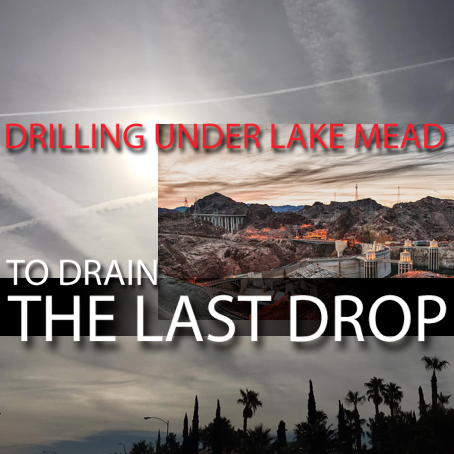









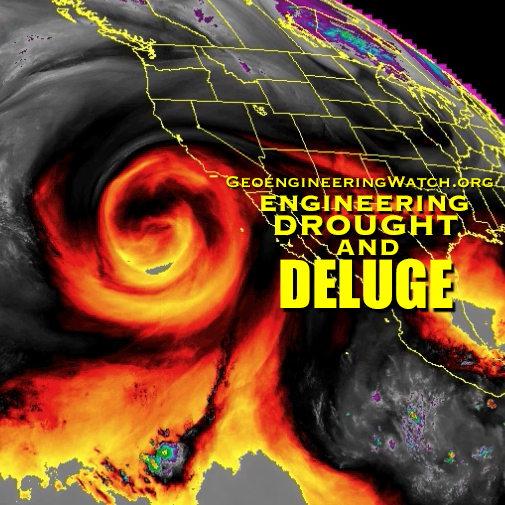







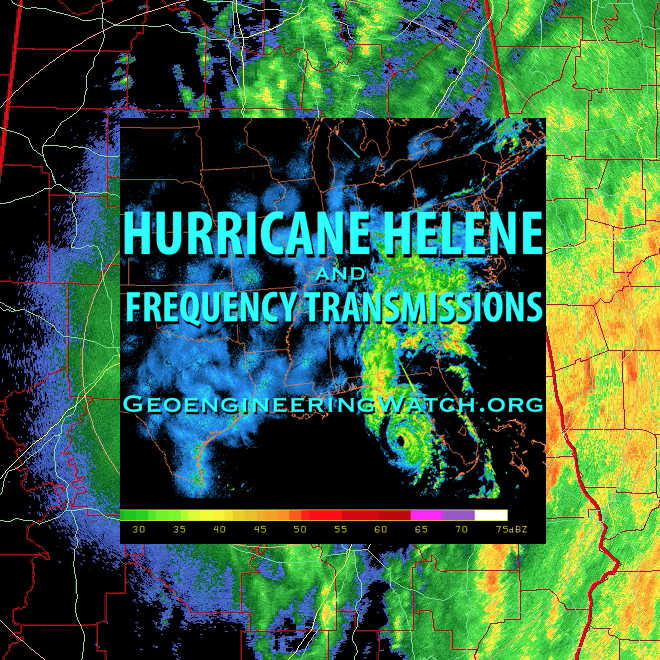












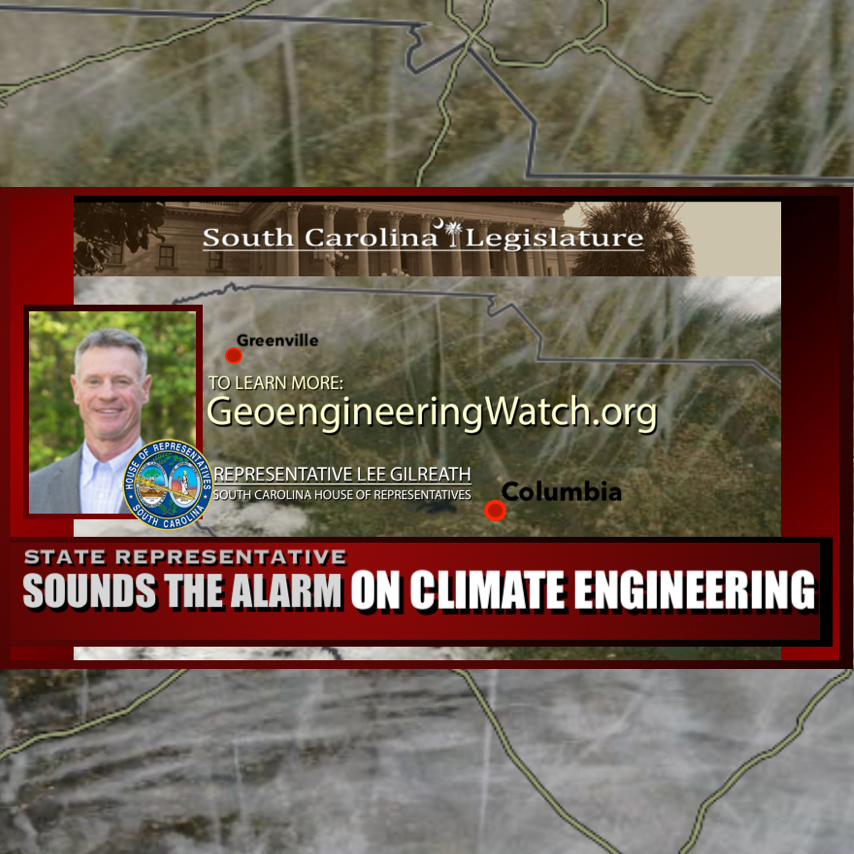
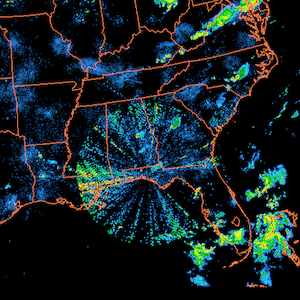
































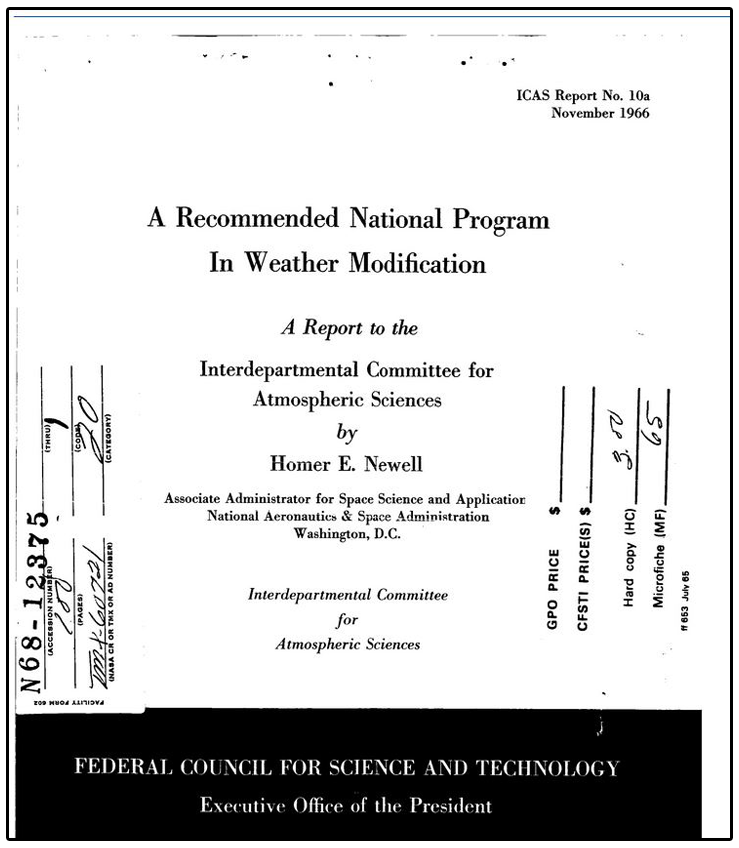

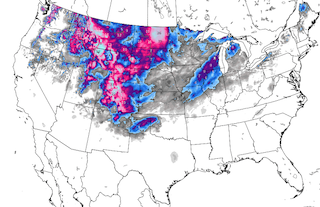


















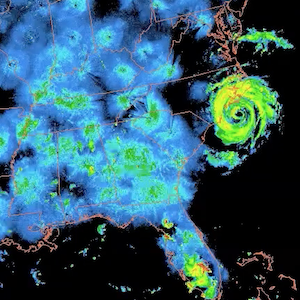























2 Responses
Dane, I just wanted to say THANK YOU for your tireless efforts, making people aware of these mad scientists and their constant assault on mankind and the planet earth, for the only thing they truly know, money. What kind of humans are we? When these so called Geo Engineers Scientists are allowed to make war on the United States of America, A country I absolutely love. These folks are criminals and nothing less then treasonous scientists. History will be sad if we don't stop this machine, called the Military Industrial Complex, which I know their are many great individuals in the Military and they don't like whats going on.. But they can't seem to stop it either, so, who can??? What politician has the guts to stand up against these criminals? There has to be someone near the end of there careers who will say to themselves?? The hell with it.. I going to call a news conference and go on the record and tell the American People and the People of the World the truth!! There must be someone out there, with the NAME THAT COMMANDS RESPECT AND HONOR! Folks people know for their trust worthiness ??? Please Mr. Congressman, or Senator, please hear our plea. You do know the truth – just share that truth with the Mainstream Media. It's coming anyway, be on the right side of History!
Symptomatic treatment by raising roads and installing infrastructure such as pumps and new sewerage will buy some time, but it is now inevitable that a very large change is underway and it will continue. Many of those places mentioned in the article will become unlivable. Salvaging a life there will be too costly and too prone to subsequent problems.
Though, the Dutch have lead the way in land reclamation. Their giant engineering feats have kept the North Sea out of reclaimed land but it is a huge project with ingenious and very expensive engineering. A large portion of the Netherlands is under sea level. It will be interesting to see how they cope with further sea level rise as well. There was talk a long time ago about making the dykes higher and this was going to be very expensive. Many dykes have road systems built on them.